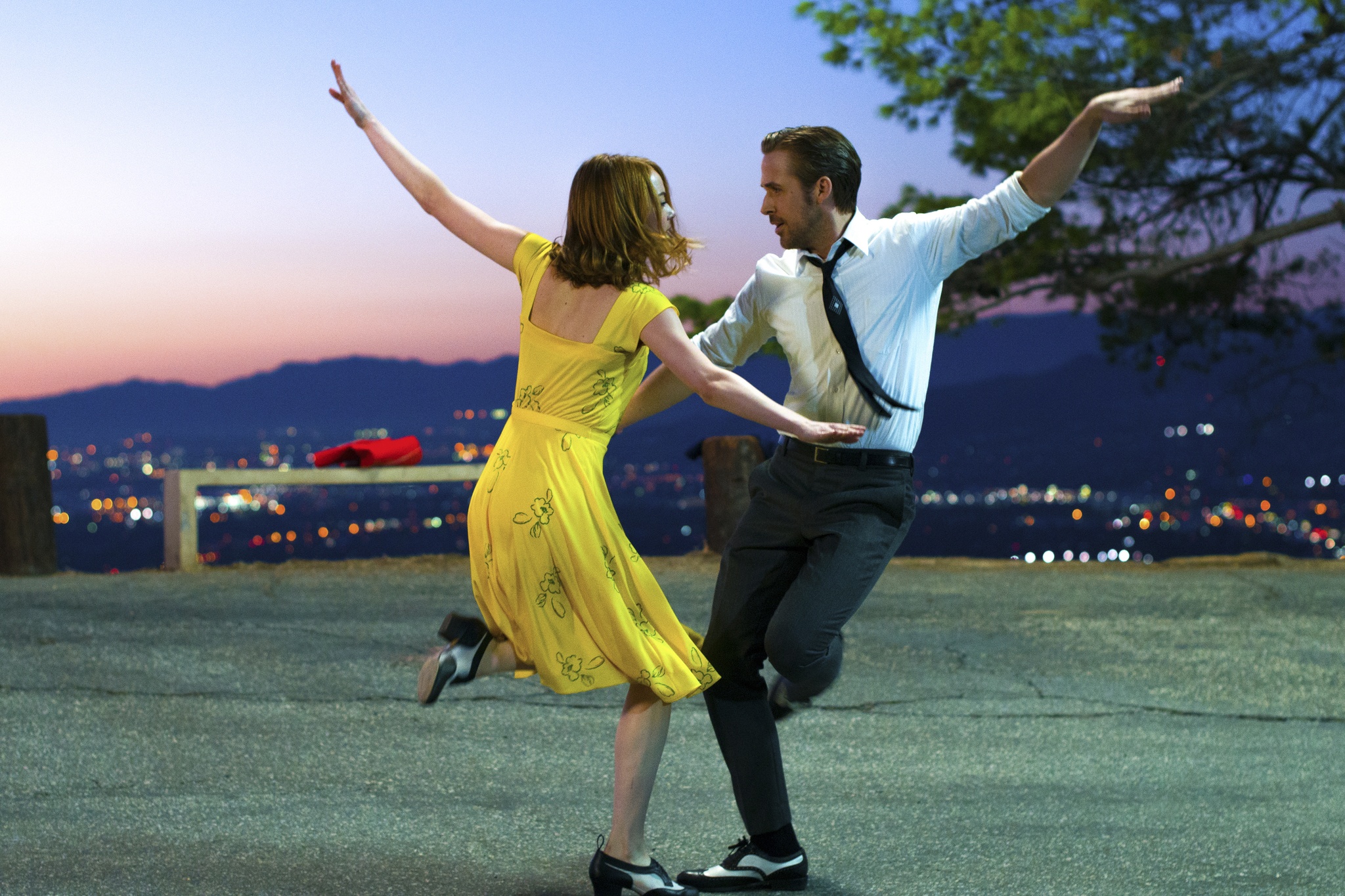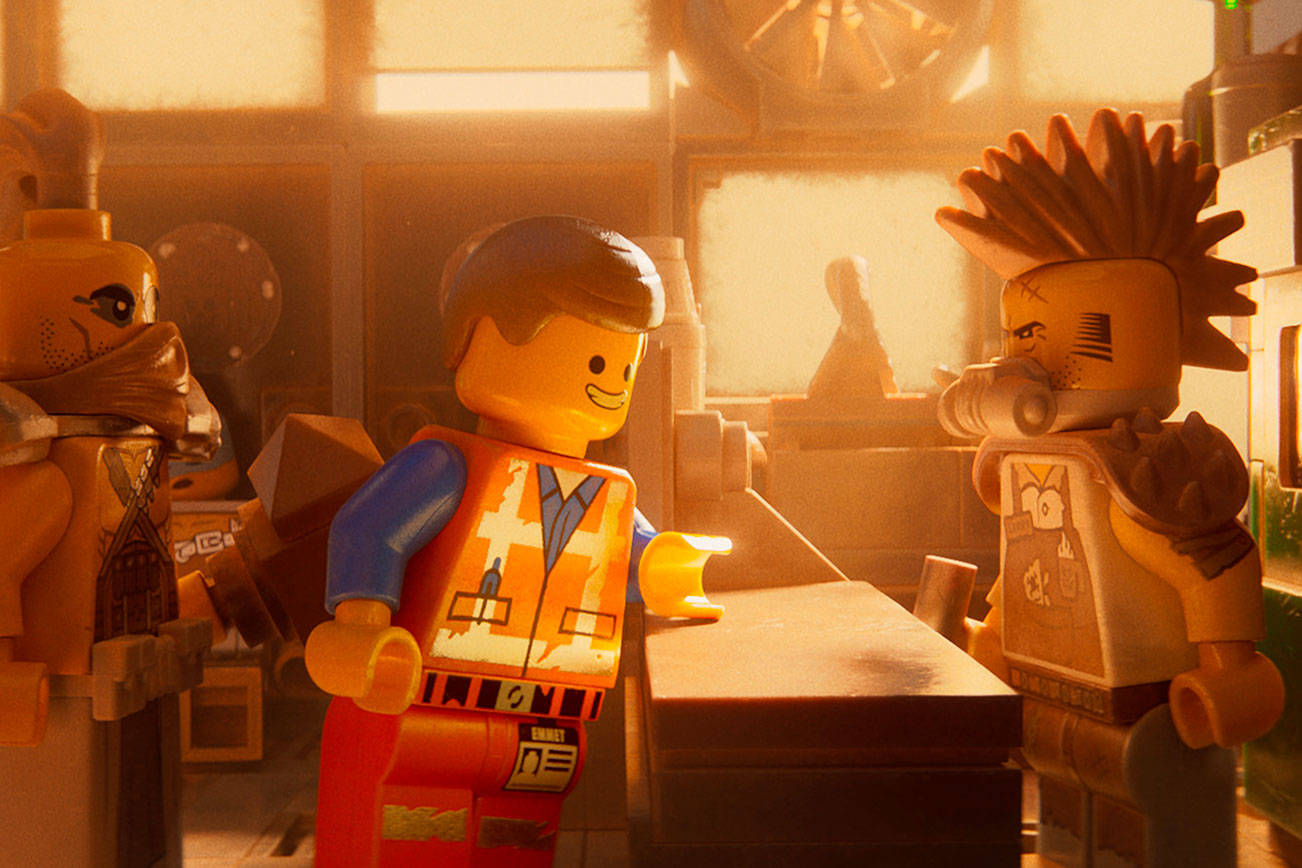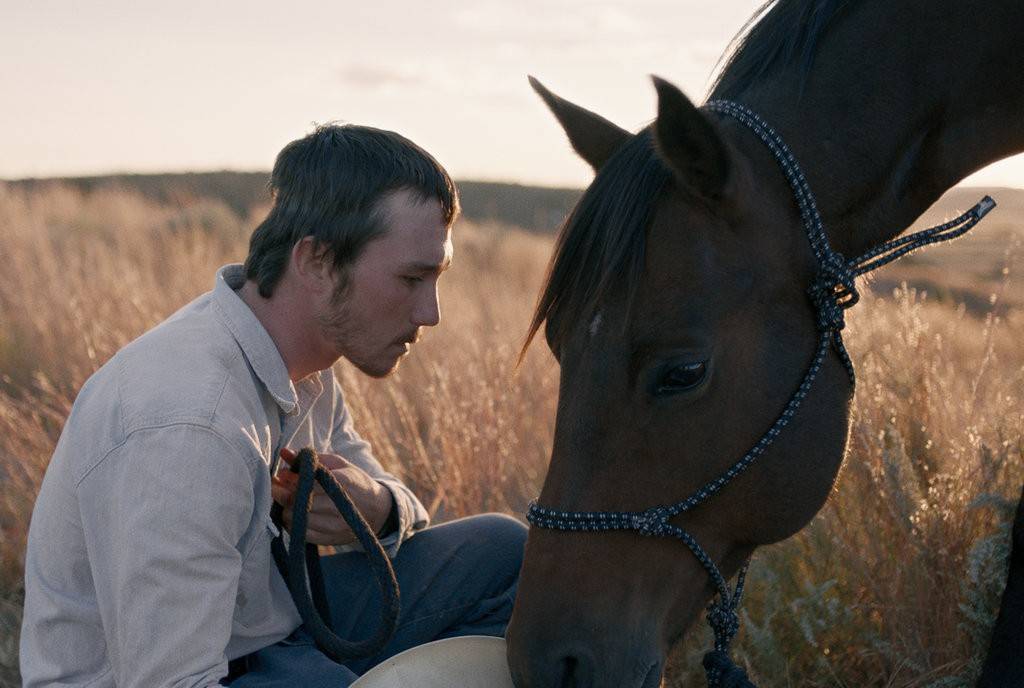It aspires to gossamer and moonbeams, to bygone eras of jazz and black-and-white movies, to Gene Kelly and Cyd Charisse. It has scenes of people breaking into song and dance in the middle of dialogue. They used to call these musicals.
How can any movie lover, or any civilized person really, be against La La Land ? Let me try to explain. The idea is swell, and the spirited efforts of Ryan Gosling and Emma Stone—neither known primarily for song-and-dance prowess, though both have experience in those departments—are, for sure, spirited. There are even moments where the musical-drama format (this isn’t exactly musical-comedy) slips into blissful gear, especially when a rambling nighttime conversation above the lights of Los Angeles morphs into a dance duet that feels truly earned, playing out in a single unbroken take that carries us into the old-fashioned movie paradise that the film is aiming at.
In that sequence, you can see why writer/director Damien Chazelle took the gamble of mounting a movie musical in an era that just doesn’t do this kind of film. Chazelle snagged a “Wow, really?” Oscar nomination for writing the showily syncopated Whiplash, but here we should recall his little-seen 2009 film Guy and Madeleine on a Park Bench, an ingratiating thesis-project picture that unabashedly took the form of a musical. The director is 31, and he has that nostalgia for things that were already played out by the time he was born. So La La Land happily embraces a stylized world where the palm trees look painted and where an idealistic jazz pianist, Sebastian (Gosling), might strike sparks with an aspiring actress, Mia (Stone), as they climb the ladder of success—but at what price?
That Chazelle thinks this is a fine, fresh question will tell you how cutting-edge this very earnest movie is. A few poignant issues are raised—at what point, for instance, do you give up on your dreams, dreams that look a little frayed at the edges after years of struggle? La La Land also hits some pleasant blue notes in treating its youthful romance with a degree of melancholy distance (Chazelle and composer Justin Hurwitz seem to have adopted the classic The Umbrellas of Cherbourg as the model here). In handing dance shoes to Gosling and Stone, Chazelle guarantees a strong baseline of skillful banter and emotional range. When Mia wonders whether she really is good enough to make it, Stone shows you the panic and resignation beneath the question. Gosling’s got leading-man stuff to burn, and he’s turned into one of our most gifted comic performers.
They deserve applause, but it would be nice if Chazelle’s affection for musicals extended to the supporting casts that used to frolic in such things; aside from an extended cameo by Whiplash Oscar-winner J.K. Simmons and modest turns from John Legend and Rosemarie DeWitt, there’s no interest in anybody else here. But then this is not a musical—it’s a “musical,” an homage that adds 21st-century attitude to an old genre; the quotation marks help us forgive the game but decidedly non-Astaire-and-Rogers-like leads. This seems to be enough for many people: La La Land generated much festival buzz, is getting awards from critics’ groups, and stands likely to haul in a bunch of Oscar nominations. I believe people when they say they are moved or enchanted by the film; it just didn’t move or enchant me. The skill on display is undeniable, but the charm feels calculated, or second-hand.
One thing for certain: This is the kind of movie in which Hollywood loves to see itself. On Oscar night you’ll hear a lot of self-congratulation about La La Land and good old movie magic and “Who says we can’t make this kind of picture anymore?” and how this is the sort of movie that inspires people to try their luck in Hollywood. Except of course that Hollywood doesn’t make this kind of movie at all—it’s a fluke that La La Land got produced among the action behemoths and superhero sequels that are the actual purpose of Hollywood now. The dreams of Sebastian and Mia seem not just unreal in that context, but frankly kind of dumb. La La Land, Rated PG-13. Opens Fri., Dec. 16 at various theaters.
film@seattleweekly.com






